EMA Pre-fill Pilot Adds Work for Companies, Value Unclear
Aug 26, 2025 | 3 min read

EMA pilot to let companies pre-fill review templates adds workload with unclear benefit, early feedback shows
Early participant feedback says sponsor-completed templates require extra work without clear value for assessors. A final report is due in early 2026.
Date: August 26, 2025
Summary
The European Medicines Agency (EMA) is testing a streamlined approach that lets drug sponsors pre-fill parts of review templates used by the Committee for Human Medicinal Products (CHMP). Early feedback indicates the pilot increases workload for companies without clearly helping assessors. The pilot covers 11 marketing authorization applications (MAAs), with a final evaluation scheduled after the last Day 80 (D80) milestone in September 2025 and a report planned for the first quarter of 2026.
What happened
- The EMA launched a pilot in November 2023 to allow sponsors to pre-fill factual data in CHMP assessment report templates used at Day 80 (D80) of an MAA.
- The model takes inspiration from the US Food and Drug Administration (FDA) Oncology Center of Excellence (OCE) “assessment aid,” which lets sponsors enter objective data and their interpretations, while FDA reviewers add their analysis.
- EMA templates in the pilot cover clinical, non-clinical, and quality sections.
What early feedback says
- Participants reported the approach creates a lot of work for applicants and offers limited value for assessors.
- EMA noted it was hard for applicants to stay strictly factual without interpretation, leading assessors to rewrite many sections.
- Sponsors cannot copy-paste from Module 2 of the electronic Common Technical Document (eCTD) because EMA requires interpretation-free content.
- Some tables requested by EMA, especially in non-clinical sections, are not typically produced in Module 2, so applicants spent extra time extracting specific data points.
Why it matters
- The pilot aims to focus assessors on evaluation by shifting basic data entry to sponsors.
- Early signs suggest EU requirements differ from the FDA’s model. EMA D80 reports demand more detail and an independent, stand-alone summary, which may limit the efficiency gains seen in the US approach.
How EU and US approaches differ
- FDA assessment aid: Applicant’s position appears first, followed by FDA’s assessment. Sponsors may include objective data and interpretations.
- EMA D80 report: Structured as a stand-alone summary of the dossier and assessment that must remain strictly factual and free of value judgments.
Timeline and next steps
- The pilot has 11 MAAs enrolled. EMA has received pre-filled D80 templates for all.
- EMA plans to analyze speed and focus outcomes after reaching D80 for the last product in September 2025.
- A draft report will be shared with participating applicants and rapporteur teams in Q4 2025.
- The final report with recommendations is expected in Q1 2026. The CHMP will decide the future of the approach.
- EMA has already made small template changes during the pilot and will consider broader updates later.
- Some companies may revise their internal Module 2 templates to better align with D80 needs.
Scope of products in the pilot
- Oncology: 4 MAAs
- Neurology: 2 MAAs
- Cardiovascular/Metabolic: 4 MAAs
- Infectious disease: 1 MAA
- One MAA is an advanced therapy medicinal product (ATMP).
Definitions
- EMA: European Medicines Agency.
- CHMP: Committee for Human Medicinal Products.
- MAA: Marketing authorization application.
- D80: Day 80 in the centralized EMA review timeline, when interim assessment reports are prepared.
- FDA: US Food and Drug Administration.
- OCE: Oncology Center of Excellence at the FDA.
- eCTD: Electronic Common Technical Document used for regulatory submissions.
- Module 2: The eCTD section that provides high-level summaries of quality, non-clinical, and clinical data.
- ATMP: Advanced therapy medicinal product.
Source: EMA Learns Hard Lessons From US-Inspired Streamlining Pilot



 Gradial
Gradial  PEGA
PEGA 




